
|
Charcoal Discs
|
Charcoal Discs or Tablets are essential for burning non-combustible incenses like resins, herbs, and powdered mixtures |
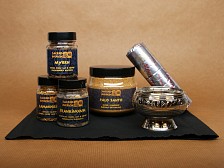
|
Gift set - Incense
|
For the incense lover in your life, this gift set of pure Myrrh and Frankincense resins and the delicious scent of Sahumerios along with the all time favourite, Palo Santo in powder form, will tantalise the senses. A complete set that incudes a quality metal incense burner and the charcoal discs needed to bring the scents to the senses. |

|
Sacred Incense - Alucema
|
Hyptis mutabilis is also known as Tropical Bushmint. It is generally described as a Perennial Forb or herb. It is native to tropical America. Hyptis mutabilis contains various essential oils and can be used as incense. |
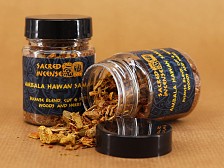
|
Sacred Incense - Ambala Hawan Samagri
|
Havan Samagri is a mixture of dried herbal roots and leaves that are burned during yagnas and homas. The Havan Samagri disseminates it into the air, to purify the environment for pooja. Contents of the Samagri: Made from ayurvedic havan exotic herbs, Black til, Jo, 32 types of dhoop, Bhimseni kapoor, rose petals, sandalwood powder, lobaan, ghee, Agarbatti, chandan, and tumeric. Havan is a sacred fire ritual done in the Vedic Hindu tradition. |
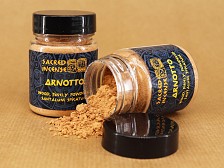
|
Sacred Incense - Arnotto
|
Australian Sandalwood has been used in the cosmetic industry for a long time. It is used as an incense and as an essential oil. made from the heartwood of the tree. The aboriginals of Australia have been well aware of the special properties of the Sandalwood tree for many centuries. |
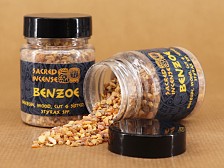
|
Sacred Incense - Benzoe
|
Benzoe is the resin from the tree Styrax benzoe, native to Indonesia. Also known as Siam Benzoin and Gum Benjamin. |
2 Forms |

|
Sacred Incense - Dammar
|
Canarium strictum exudates a resin called as ‘Sambrani’ or ‘Dammar’ which has many commercial uses. Its usage among tribal and folk people in different parts of India has been explored through ethnobotanical studies. |
2 Forms |
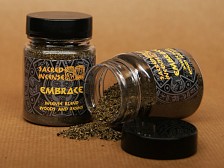
|
Sacred Incense - Embrace
|
"Embrace" is a spellbinding blend of mystical resins, where the alluring Queen of the Night resin takes center stage, inviting you into a world of deep comfort and mystery. |
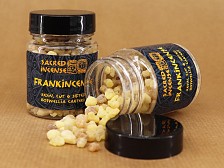
|
Sacred Incense - Frankincense
|
The word "incense", meaning originally "the aroma given off with the smoke of any odoriferous substance when burnt", has been gradually restricted almost exclusively to Frankincense, also known as Olibanum. |
2 Forms |
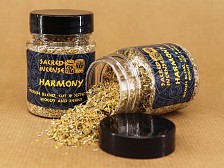
|
Sacred Incense - Harmony
|
Harmony is a divine incense blend of Peruvian woods, resins, flowers and herbs, ideal for cleansing and blessing the home or space before a ceremony. It is made from countless ingredients, such as Palo Santo, Muna, Cedarwood, Sage, Copal, Alucema, Mirra, Coha, Juniper, and much more. |
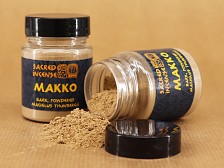
|
Sacred Incense - Makko
|
Makko (the ground bark of Machilus thunbergii) is the incense fuel and binder that is used to make incense sticks. Other than making incense into different shapes and formats, and to keep it smoldering, Makko can be used on its own, to help ignite a trail of fragrant raw materials. |
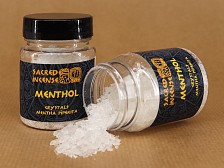
|
Sacred Incense - Menthol
|
Of the members of the Mint family under cultivation the most important are the several varieties of the Peppermint extensively cultivated for years as the source of the well-known volatile oil of Peppermint. |

|
Sacred Incense - Myrrh
|
Commiphora myrrha is indigenous to eastern Mediterranean countries, Somalia, Ethiopia, Eritrea, Yemen, and South Arabia. Myrrh is the resin of this tree. Myrrh has been used from remote ages as an ingredient in incense, perfumes, etc. |
2 Forms |
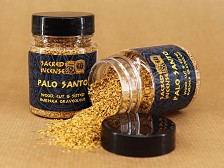
|
Sacred Incense - Palo Santo
|
Palo Santo, or "Holy Wood" or "Sacred tree" is a natural aromatic incense wood, used for centuries by the Incas as a spiritual remedy for purifying and cleansing and to get rid of evil spirits, misfortune and calamity. |
3 Forms |
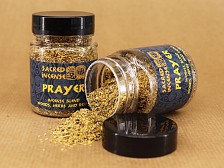
|
Sacred Incense - Prayer
|
A prayer incense blend of resins, herbs and wood ideal for meditation, prayers, and ceremonies. Sprinkle over burning charcoal in a heat-proof dish. |
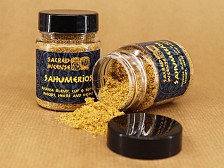
|
Sacred Incense - Sahumerios
|
Fragrant woods, flowers and herbs mixtures for use as a ceremonial incense. Contents: Palo Santo wood (Burserea graveolens) Retama flowers (Spartium junceum), Toronjil leaves (Melissa officinalis), Manzania flowers (Matricaria chamonilla), and Romero leaves (Rosmarinus officinalis). |
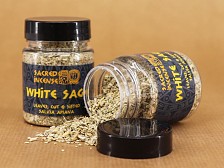
|
Sacred Incense - White Sage
|
White sage is primarily used as an incense, and is burned to give a general sense of well-being as well as to drive away specific ailments. Several species are called "Sage" and burned in this fashion, most of them in the Mugwort genus. |